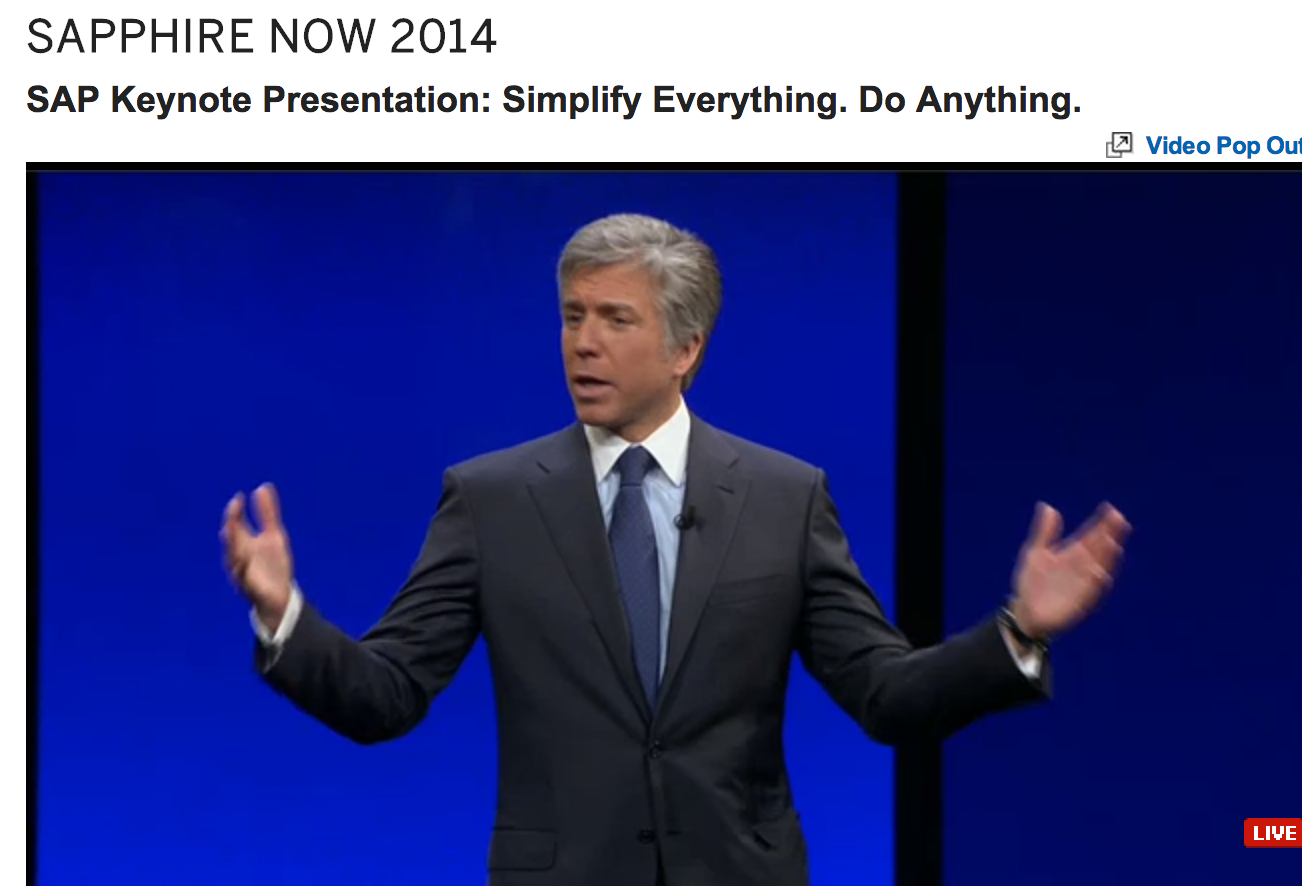SAP on HANA and why it matters
If you're doing any business with SAP, being SAP consultant or SAP user, you should not have missed last week's press conference where SAP announced SAP's business suite on HANA. A long expected message, but thrilling even so. It shows how serious SAP is taking In Memory technology. And even more, analyst Dennis Howlett, identified SAP's stepping stone into the cloud future, from #SAPonHANA into SAP's business suite in the cloud. Following the path so successfully set by Salesforce.
A lot can be found on SDN or other analyst sites. Please allow me to point out and summarize three blogs. My advice to you: start with reading, jump into other reading material, subscribe to developer licenses and start getting your hands dirty. And by that make up your mind. The SAP world is changing rapidly, important for System Integrator's as they have to change their business model accordingly. 2013 is the year of making choices.
Find out, as System Integrator, to which category you belong in the statement from Mary Kay Ash:
There are three types of people in this world: those who make things happen, those who watch things happen and those who wonder what happened.
Image copied from Strategydriven.com
Dennis Howlett, SAP on HANA: where SAP wins and how it has missed the real goal
- The analysts were surprisingly positive and pushing SAP towards new things. The SIs were less than enthusiastic.
- First the good stuff. SAP is coming to market with beta customers. The product is available now. Development for Business Suite on HANA started in 2010 so to get this to the current state in less than 42 months is laudable by any standards.
- SAP's stepping stone into the cloud future: Hence, while SAP does not say so in so many words, the company will have the BusinessSuite running on HANA in cloud environments in the not too distant future.
- This is going to be very bad news for SIs who have been used to a diet of one, two and three year upgrades.
- What's more, the new class of SI that HANA is attracting will outsmart and outpace the big boys very quickly. That will represent what today is an untold story but one that will bring into question the entrenched SI model.
- So where did SAP miss? We are of the belief that SAP should bundle the database but charge more for the new applications and especially those that deliver quantum value.
- However, HANA is a database and while speedy, it is in a class of technology that has become commoditized.
- In my view SAP missed a unique opportunity to do something that would be truly disruptive and allow it to start getting serious scale for HANA adoption.
- Let's not forget we are now seeing an SAP that is coming to market with new solutions and the first customers at the same time. That's something entirely new and should impress customers used to the yawning chasm that has previously existed between announcement and delivery, let alone implementation.
John Appleby, 2013 - the year of the SAP Database
- This means that if you want to, you can run all of your SAP apps on a SAP database. I don't believe there is a current software revision that requires a non-SAP database.
Thorsten Franz, SAP on HANA, and Pushdown for All: News about ABAP's Adventurous Relationship with the Database
- To sum it up briefly, in previous years, all ABAP programming against the database used a layer of abstraction that reduced the possibilities to the smallest common denominator – a very small subset of SQL features defined by those functions that were supported by all databases on which SAP runs.
- In order to achieve the amazing performance HANA is capable of – executing queries and calculations hundreds or even thousands of times faster than other databases –, one has to change the applications so that they let the database do the things it can perform much faster than the ABAP application server.
- Fork for HANA:
- For every optimization, introduce a fork (IF HANA … THEN … ELSE … ENDIF). The existing code remains unchanged, and new, incompatible code using HANA-specific artifacts, is added as the HANA branch of the fork.
- Rewrite for all
- For as many optimizations as possible, try to get away without a fork. Rewrite the code once, so that the new code is processed on systems with HANA and without HANA.
- The smart solution is to combine the two approaches: Realize as much of the HANA optimization as possible with the “rewrite for all” approach, but don’t be shy to use “fork for HANA” when amazing factors or entirely new features are within reach
- Stored Procedures would now be a used for HANA and other databases, too.
- And some interesting comments:
- Hasso was very clear - this is the beginning of the end for batch and ABAPers will find they have much less to do. The first thing ABAPers should do (as per Thomas Jung) is learn or brush up on SQL.
- That's because this is only a stepping stone to SAP offering BusinessSuite on HANA in the cloud...at some point in the not too distant future.



Comments